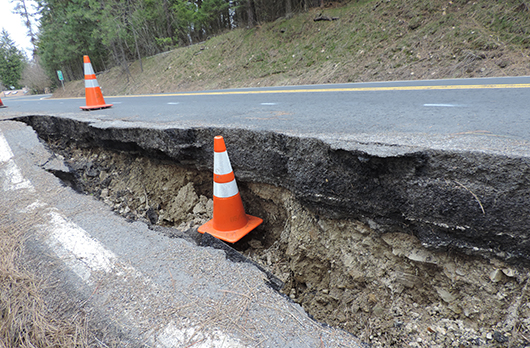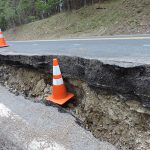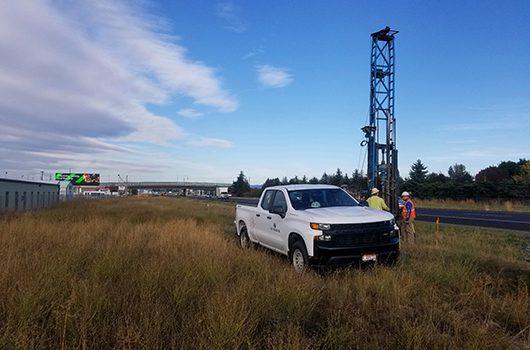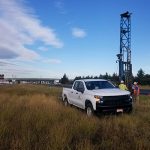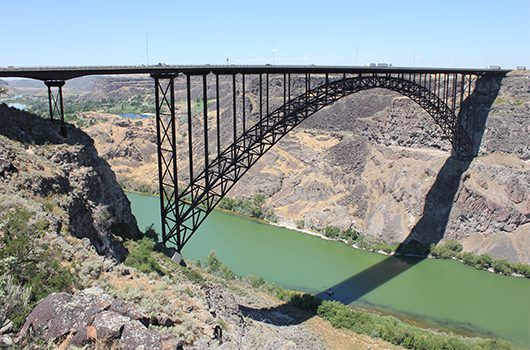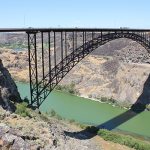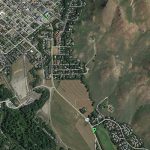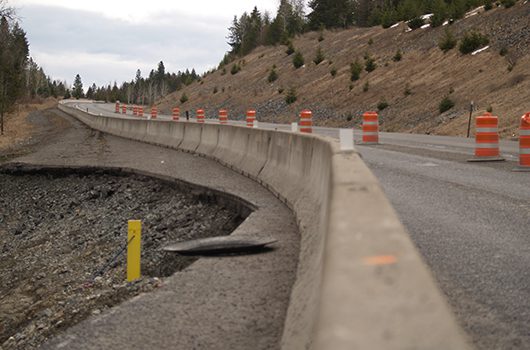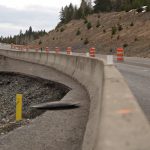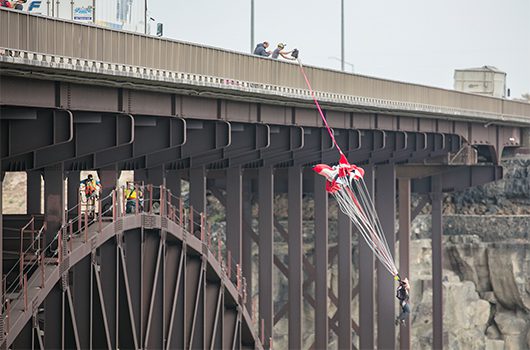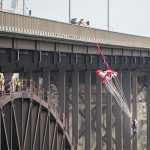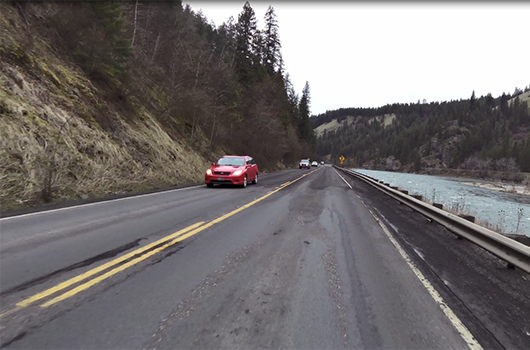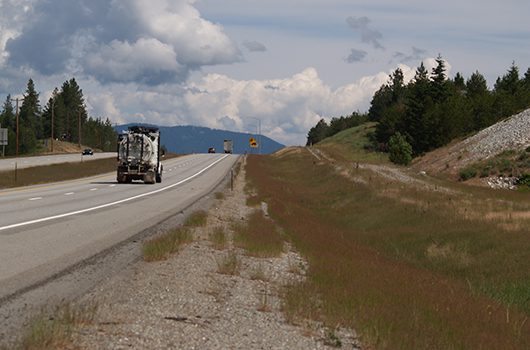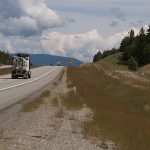The culmination of the year’s innovation efforts for the department put the spotlight on several money- and time-saving ideas that improve efficiencies, stretch taxpayer dollars and improve services for the main ITD customer – the road user.
This year’s Best of the Best were selected after Innovation Stewards from the districts and divisions named their favorites and the Innovative Business Practices team weighed in. Employees from all over the department then cast their votes over a two-week period to arrive at the final list. The winning innovations and teams were announced at the all-employee pizza party Sept. 19.
“Innovation is just how we get better every day,” Chief Administrative Officer and ITD Innovation Champion Char McArthur said at the event.
Watch the Best of the Best video shown at the pizza party here.
In case you missed it, here they are again:
More than a third of the innovations submitted in FY19 were in the Safety category, a clear reflection of the emphasis that the department has put on the safety of employees and safer overall operations. That brings us to our first Best of the Best winner:
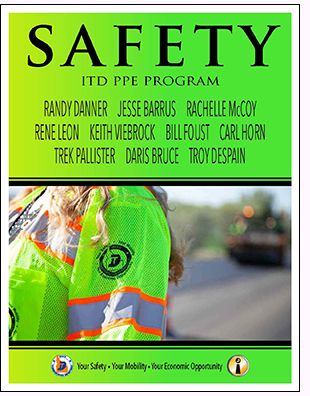
SAFETY
Title – ITD PPE Program
The department’s focus on employee safety led to an upgrade in Personal Protective Equipment (PPE) last year, including more reflective nighttime clothing, a change in the color of our safety vests so that drivers could better see ITD employees working on the side of the road, and an upgrade in safety footwear as ITD unveiled a Boots Program. These ideas all came from hearing the safety concerns of employees. The first pillar in ITD’s mission statement is Your Safety, and that clearly extends beyond just the safety of the traveling public to our own workers!
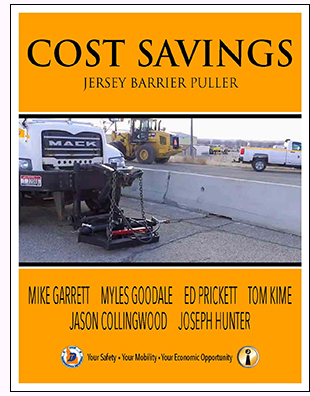
COST SAVINGS
Title – Jersey Barrier Puller
ITD’s Caldwell maintenance shed came up with an innovation last year that saves time, reduces employee risk, and could save tens of thousands of dollars in equipment costs per location. The crew often has to realign jersey barriers that are hit by cars. It took them days to cover the miles of barriers within the urban Interstate 84 corridor. So, they machined a hydraulic attachment for a plow truck that is much safer and faster than the old method. The new barrier mover is slated to save more than 1,000 hours and about $21,000 in equipment costs for the Caldwell shed. Other areas may see more or less savings, based on the amount of time devoted to realigning median barriers.
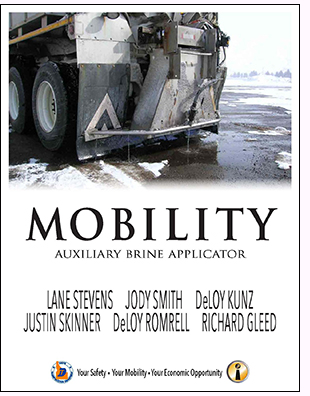
MOBILITY
Title – Auxiliary Brine Applicator
In the Mobility category, the Montpelier maintenance shed came up with an innovation that quickly applied salt brine to areas of greatest need, or to add brine directly to granular salt. The goal, said Foreman DeLoy Romrell, was to “make us more efficient” by adding a brine application system to the trucks putting salt on the roads and specifically targeting wheel paths to clear those areas more quickly for the public. They outfitted three of their salt trucks with gravity-flow brine bars on the back of the sanding chute and also built in an extra brine saddle tank. The spray nozzle helps them target “trouble” areas like bridges, overpasses, school zones or curves.
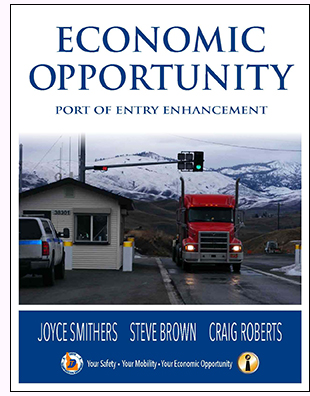
ECONOMIC OPPORTUNITY
Title – Port of Entry Enhancement
Updating 25-year-old systems for credentialing motor carriers improves the service our ports of entry give commercial drivers. Designing, building and implementing this new system will enhance the accuracy of data. It also saves about 15,000 hours for our people by automating manual data-entry processes. In the case of a customer who is meeting all requirements satisfactorily, they are able to bypass the POE, thus increasing the safety and economic mobility of freight on Idaho’s highways. The POE team saw a need and an opportunity to enhance the systems to provide staff with a tool to achieve ITD’s mission and provide the best service to customers.
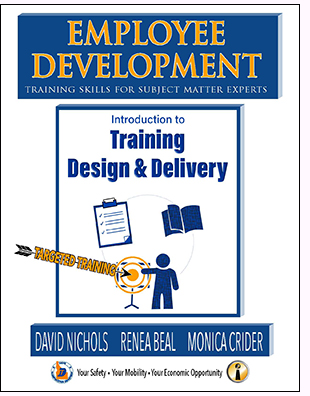
EMPLOYEE DEVELOPMENT
Title – Training Skills for Subject Matter Experts
Sometimes the people who know their topic better than anyone else, lack the skills to convey that knowledge to other employees who can help them. With an increasingly new and inexperienced workforce, there is a need for Subject Matter Experts to pass along their experiences and technical know-how. The ITD Training & Development staff is offering courses specifically designed to fill that gap. Trainers David Nichols and Renae Beal put together a training course for SMEs in the Consulting Services group. Beal taught the course again for the DMV Policy and Program Management team, and Nichols said the class, called Introduction to Training Design & Delivery, will be offered starting this fall. And all of this translates to better customer service.
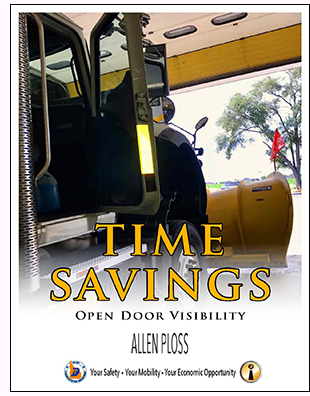
TIME SAVINGS
Title – Open Door Visibility
When Allen Ploss from the Jerome Maintenance crew found himself with a bunch of scrap pieces of reflective tape that were destined for the garbage bin, he thought of another time-saving use that would help improve safety for those on the road. Allen took the scraps and applied them to the inside of the truck’s door on the doorjamb. When the door is open and sticking out from the side of the vehicle, the reflective tape will shine in the lights of an approaching vehicle at night, preserving the safety of the worker and the driver. The reflective strips can also be affixed to the outer edges of a snowplow for safer nighttime or low-light operation.

CUSTOMER SERVICE
Title – SNOW (Safely Navigating Our Winter)
Preparing inexperienced drivers for winter conditions on Idaho roads is a challenge each year. The winner in the Customer Service category comes from the S.N.O.W. team — Safely Navigating Our Winter. The SNOW team, with members from divisions and districts all across the department, developed an outreach program to share safety message with young drivers. To accomplish this, the team developed a plan that included everything from a presentation outline and ITD snow-operations facts, to classroom activities and winter-related handouts and giveaways. Developing an outreach packet was just the beginning, and S.N.O.W. is working on a large-scale push of the program this fall and winter. The ultimate goal is to repeat the outreach year after year. By reaching these young drivers before the snow flies, they hope to encourage safer winter driving.
It won’t be an easy task, but ITD knows how to make big things happen.
Making it safer, more efficient, saving time and money, and improving service — that’s the heartbeat of Innovate ITD!
